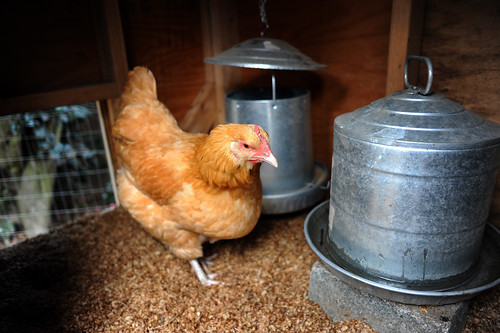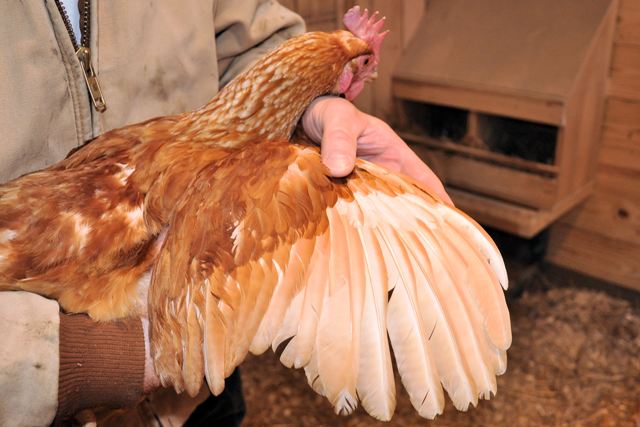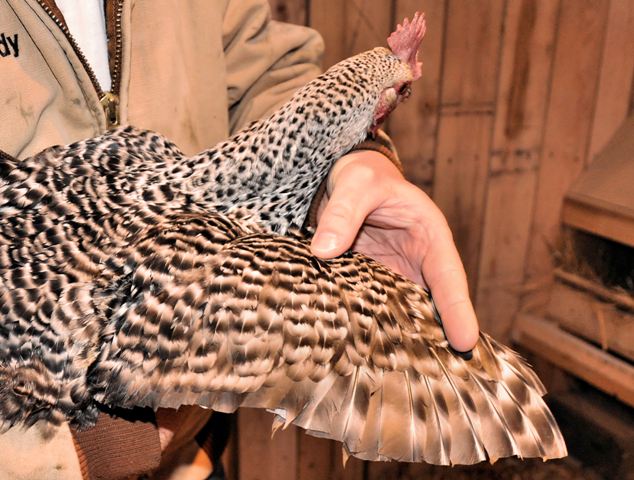This came from the magazine Backyard Poultry by Gail Damerow.
This spring, when we bought them back to the garden, the Silkies didn't take long to find their way into the blueberry patch, 95 feet from their coop. They spend most of their days scratching and dust bathing in the blueberry mulch, which posed no problem until we seeded melons and squash between the blueberry bushes. The Silkies destroyed the seedlings by covering them with mulch, so we reseeded and protected the seedlings until they were big enough to survive on their own. Our hope is that the Silkies will keep squash bugs from devastating the vines, as has happened in previous years,and to date (knock on my wooden head) we haven't seen any sign of bugs.
So far the Silkies haven't made it into the main part of the garden, consisting of a series of permanent foot-tall raised beds with gravel paths between them. Even if, or when, they can't do much damage once the vegetables are established. Protected new transplants or seedlings, should that become necessary, would be a simple matter of running a low fence around the top edge of each bed. The Silkies can hop about 12 inches high, but since they don't fly, they can't get over anything higher than they can hop.
Today we keep four Silkies in the garden - three hens and a rooster. Even though their little coop is near the bedroom, we don't here the cock crow until we are ready to get up and let them out. Then Papa Silkie is so happy to be let out in the garden he lets the whole world know about it.
Gail Damerow keeps Silkies in her garden in the Upper Cumberland of Tennessee.


